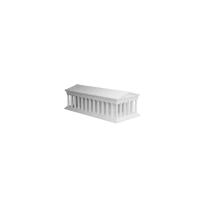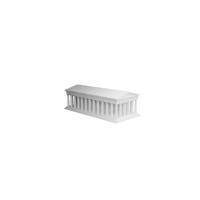Temple of Ares (440 BC) by Maryam Jäger [OBJ]









The temple of Ares on the Agora in Athens was built in the 5th century BC (around 440 BC) and was initially a temple dedicated to the goddess Athena. Originally it stood in the Demos Pallene and was moved to the Agora only in roman times in the 1st century BC. At this time, it was rededicated as a temple of Ares. Thus, it is one of the most famous examples of the so-called floating temples (temples built in a particular place and after some time (usually several centuries later) dismantled stone by stone and rebuilt in another place). It is a doric temple with 6 x 13 columns.
Like many other buildings from antiquity, building blocks and architectural parts of the temple were reused in late antiquity for other purposes. Therefore, during excavations 1937 the temple foundations were uncovered under byzantine structures. Many of the architectural elements which are today considered part of the original temple were found across the whole area of the agora. Despite the poor state of conservation, the temple could quickly be identified as the temple of Ares because of the topographical descriptions of Pausanias (1,8,4).
The 3D reconstruction is based mainly on two factors. Firstly, the architectural elements and the mason’s letters which are preserved on several of the fragments. And secondly on comparisons with the Hephaisteion in Athens, the Temple of Poseidon in Sunium and the Temple of Nemesis in Rhamnus. These are attributed to the same architect and can therefore serve as comparative buildings. The 3D model attempts to depict the temple as it appeared on Agrora in the 1st century BC. Since only a few coherent components have been preserved, comparisons with the above-mentioned temples and the logical additions to the existing architectural elements are used.